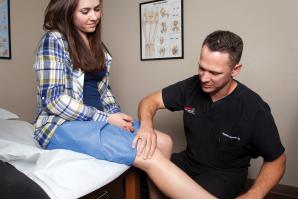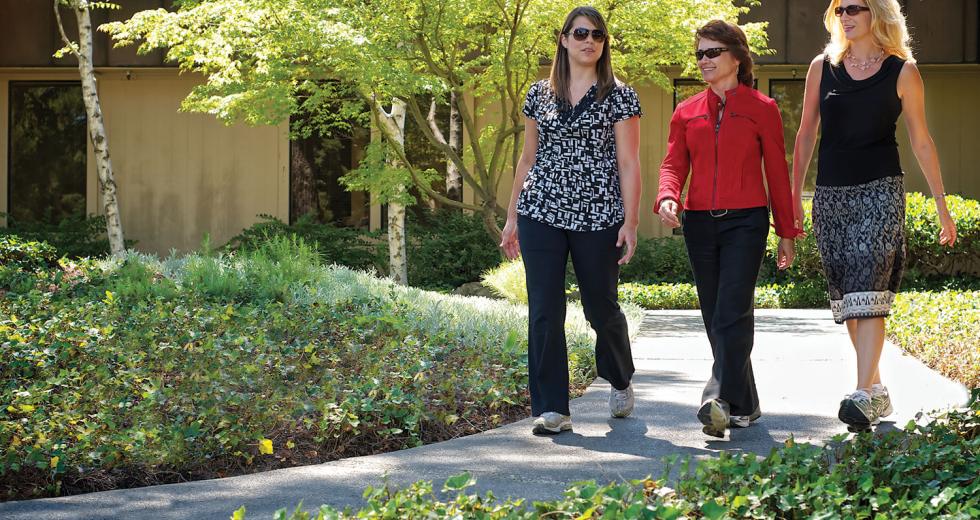Women in some parts of the United States are dying younger than they did a generation ago.
Five Mississippi counties have the country’s worst life expectancy for women: just 74 and a half years, on average, the University of Washington’s Institute for Health Metrics and Evaluation reports.
In a recent study called “Falling Behind,” the institute found that the United States is no longer keeping pace with the 10 nations, including Canada and Japan, that have the best life expectancies in the world.
Between 1997 and 2007, IHME reported, life expectancy for both women and men declined in 737 of the more than 3,000 U.S. counties it surveyed. Just 227 counties saw a drop during the previous decade.
“Despite the fact that the U.S. spends more per capita than any other nation on health, eight out of every 10 counties are not keeping pace in terms of health outcomes. That’s a staggering statistic,” says Dr. Christopher Murray, IHME director and one of the study’s authors.
Obesity, smoking, high blood pressure, diabetes, poverty, poor eating habits, lack of exercise, lack of health insurance and cutbacks in preventative health care programs are likely culprits for the shortened lifespan. They’re taking a devastating toll on women (and men) in the Deep South, Appalachia and parts of north Texas, where life expectancy is the lowest in the country.
The same issues concern public health officials in the 10-county Capital Region, where women’s life expectancy did not decline in the years between 1987 and 2007, but improved only slightly.
In Yuba County, for instance, women live on average 78.9 years, just 1.1 years longer than they did a generation earlier, according to IHME. The region’s best performer was Placer County, where women’s life expectancy increased by 3.5 years, to 82.8 years. Sacramento County saw an increase of 2.7 years, for a life expectancy in 2007 of 81.
Compare those numbers to San Francisco, though, where the life expectancy of women rose a more impressive 4.8 years over the 20-year period, and Marin County, which saw a 5.4-year boost in the longevity of its female population.
“In the United States, unfortunately, wealth equates to health,” says Dr. Glenna Trochet, recently retired health officer for Sacramento County. “The wealthier you are, the healthier you are. You can expect the numbers to get worse as the recession gets worse.”
Because of years of recession-driven budget shortfalls, Sacramento and other Northern California counties have seen deep cuts to their social services and wellness programs, particularly those that aid women and children, Trochet says.
“We no longer have public health nursing available to families who might need help with their newborns. That probably will affect longevity and life expectancy.”
Funding cuts have reduced most prevention services in Sacramento County, leaving the state and federal government to pay for such services, she says, emphasizing that major cuts face federal funding, too.
“Unfortunately, when cuts are made, they’re usually to the disenfranchised and the poor,” Trochet says.
As government funding withers away, community leaders in the Sacramento region are stepping up efforts to encourage healthier lifestyles among their citizenry.
“Seventy percent of diseases are chronic, and they’re preventable,” says Galen Ellis, health and wellness program manager for the Nevada County Public Health Department. “Communities need to have connected sidewalks, so that people can walk more and (have) access to healthy food for all socioeconomic levels.”
Nevada County was among 40 counties and cities that earlier this year received an Achieve grant (Action Communities for Health, Innovation and Environmental Change) from the Centers for Disease Control and Prevention’s Healthy Communities Program and the National Association of County & City Health Officials.
“It’s meant to pull together community leadership to promote healthy eating, physical activity and smoking prevention,” Ellis says. “They will develop a community action plan.”
Already, she says, county leaders are encouraging citizens to park their cars and walk more, which not only will benefit their health but improve air quality and make breathing easier for people with respiratory issues. County schools participate in a farm-to-school program in which farmers visit schools and students visit farms in an effort to encourage the consumption of fresh, local food.
“It all starts in childhood,” Ellis says. “What happens when the body is growing is key to the rest of the life. That’s why it’s important to promote healthy eating in the schools. Lunch programs need to be reformed. We need to restore physical education in the schools. When those habits start early in life, they’ll stick.”
Chronic diseases don’t happen overnight, says Jan Babb, who runs the Yolo County Maternal, Child and Adolescent Health Program.
“You don’t just wake up one day and have diabetes. It typically is a lifetime pattern that will lead to that chronic disease. Chronic diseases cause a lot of our mortalities in this country, so preventative services can lead to better health later on. There is no question about that,” Babb says.
One of the promising aspects of health care reform, she added, is to “beef up prevention.”
Tobacco use is lower in California than almost anywhere else in the country due to aggressive antismoking campaigns and long-standing smoking restrictions in public places. Only Utah has fewer smokers than California, at 9.1 percent of its population.
In 2010, just 12 percent of Californians said they smoked, down
from nearly 26 percent in 1984, the state’s Department of Public
Health reports.
Public health officials in the Sacramento area are alarmed by
serious health threats to women that aren’t being adequately
addressed because of the lack of monetary resources.
“We have a raging epidemic of sexually transmitted diseases that affect women’s fertility and cause all sorts of complications,” Trochet says. “Sacramento has one of the highest rates of chlamydia and gonorrhea in the state, mostly in 15- to 25-year-olds.
In Yuba County women live on average 78.9 years, just 1.1 years longer than they did a generation earlier.
Babb is also concerned about what she calls “an uptick in pregnancy-related mortality” in California.
The state’s public health department reported earlier this year that African American women are four times more likely to die of pregnancy-related complications than women of any other race or ethnicity. There were 14 childbirth-related deaths per 100,000 live births in California in 2008, up from six in 1996. Higher death rates were found among low-income, less-educated black women. Contributing to their deaths were “excessive gestational weight gain” and “medical problems from C-sections,” according to the report.
“Any uptick is concerning, because we wouldn’t expect that women would be dying in childbirth,” Babb says.
The Institute for Health Metrics’ exhaustive study of Americans’ life expectancy involved comparing 3,138 U.S. counties against the rest of the world. Researchers found, first of all, that American women fared much more poorly than American men. Women in 1,373 U.S. counties dropped more than five years behind the nations with the best life expectancies, while the men in just 661 counties fell as far.
The news was worse for African Americans, who have lower life expectancies than whites in every U.S. county, according to the institute. The life expectancy for black women is 69.6 to 82.6 years, and the range for black men is 59.4 to 77.2 years.
Virginia had the biggest longevity gap of any state: Life expectancy for a woman in upscale Fairfax County is 84 years, but 200 miles away in Greensville County (with its two McDonalds restaurants), life expectancy for women is just 75.
The best places in the country for a woman to live a potentially long and healthy life are in Teton County, Wyo., Montgomery County, Md., and along the Pacific Coast. Collier County, Fla., boasts the nation’s longest life expectancy for women: 86 years on average.
In 2007, life expectancy overall in the United States was 75.6 years for men and 80.8 years for women, putting both genders in 37th place in the world. Women live the longest in Japan (86.2 years), followed by Hong Kong, France, Switzerland and Italy. Iceland is where men live longest (80.2 years).
“Given the poor performance of the U.S. on health outcomes — a performance that is worsening each year — it is time for new thinking targeted to where the biggest impact can be made on health outcomes,” IHME researchers said.
Recommended For You

Avoiding the Pop
Why do so many women tear their ACL, and how can they prevent it?
In one of the crueler twists of sports, ACL tears often happen in freak accidents that you can’t really control. Seventy percent occur without contact. Even more cruelly, a woman is four times more likely than a man to tear the ligament — especially if she’s young and active.

Sleep It Off
Why taking a nap would be more valuable than reading this article
I have an especially stupid case of insomnia, but we as a society are rotten sleepers and I’m not alone. Since doctors recommend seven to eight hours a night, about half the population is sleep deprived. We’re a nation of walking zombies.



